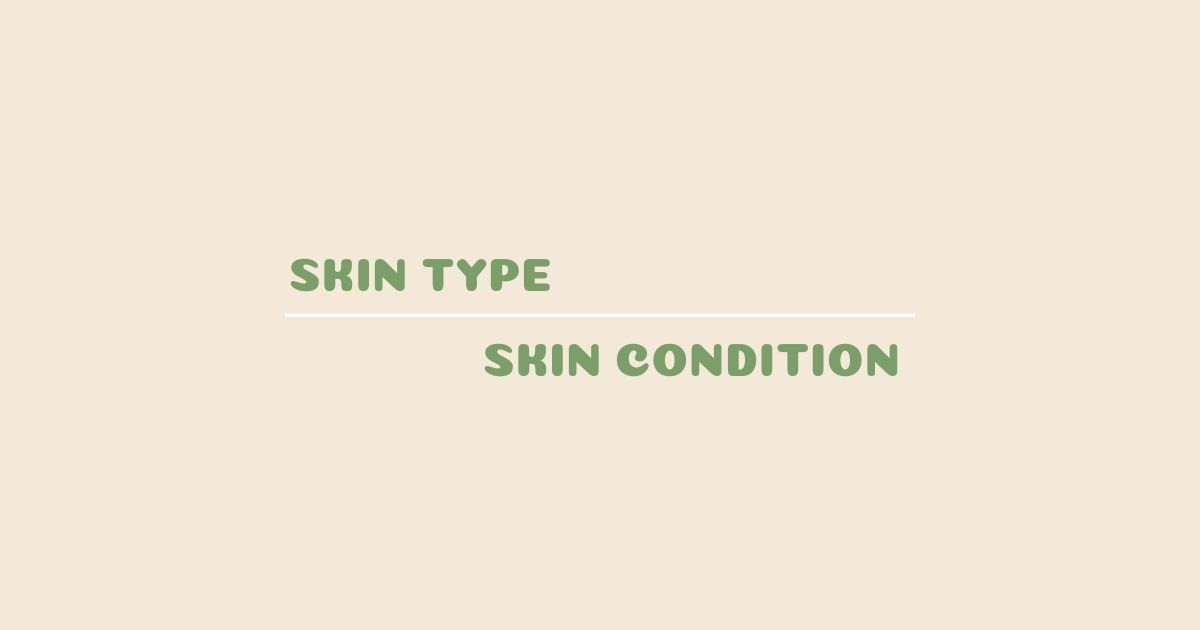Estimated Reading Time: 3 minutes

1200px) 100vw, 1200px"/>
Learning the difference between your skin type and skin condition helps you choose the right skin care products, so it’s very important to know how to differentiate between the two. Determining your skin type and skin condition (if any) helps you make better choices in curating your skin care routine and using the right products to tackle your skin issues.
Skin Types
Your skin type is what you’re born with, and genetics play a big role in determining skin type. Skin type doesn’t change, whereas skin conditions may be temporary and vary over time. There are five skin types: normal, oily, dry, combination and sensitive skin.
Normal skin
Those with normal skin have well-balanced skin, with a good balance of oil and water. Your skin is neither dry nor oily, with little to no imperfections. Your pores are barely visible, unlike those with oily skin. Your skin doesn’t react to products easily so picking the right skin care products is a breeze.
Products to try:
Oily skin
If you have oily skin, then you have to deal with shine control almost every day due to excess sebum production. Your pores are visible and tend to appear larger than other skin types. When it comes to skin care for oily skin, opt for non-comedogenic products and include clay masks, AHAs and BHAs in your daily routine.
Products to try:
Dry skin
Dry skin is the opposite of oily skin, where the skin produces less sebum. Dry skin lacks lipids, which makes it harder for skin to retain moisture, and the skin barrier is less resilient than other skin types. The most important thing for dry skin is hydration. Make sure to add products to your routine that keep your skin hydrated, like a hydrating toner and a nourishing face oil or moisturizer, to prevent dull or flaky skin.
Products to try:
Combination skin
Combination skin is a mix of both dry and oily skin. If you find that your T-zone area is oilier than your cheeks or the sides of your face, then you most likely have combination skin. Your skin tends to break out in oilier areas, so use a salicylic acid cleanser or incorporate a BHA toner into your routine to keep acne at bay. For drier parts of your face, make sure to moisturize your skin well. Go for gel moisturizers during the day and a richer one in the evening.
Products to try:
Sensitive skin
Does your skin react to products easily? If the answer is yes, then you have sensitive skin. Sensitive skin is more prone to acne, redness or irritation. Taking care of your skin barrier should be your priority since it can easily get compromised. Look for products formulated without fragrances to minimize chances of irritation. Skin-soothing ingredients, including centella asiatica extract, calendula extract, shea butter, squalane and aloe vera, are perfect for repairing or calming sensitive skin.
Products to try:
Skin Conditions
A skin condition can be temporary and there are external factors that influence its development, such as your lifestyle (including diet and stress), weather changes and pollution. There are many types of skin conditions, and some of the most common issues include acne, rosacea, dehydration, pigmentation and signs of aging.
No matter your skin type, everyone can be prone to acne. However, breakouts are most likely for those with oily skin since excess sebum can clog pores and lead to acne. Read more about skin care for acne in this post.
Pigmentation comes with acne. Once your blemish disappears, it can turn into a dark spot, also known as hyperpigmentation. Head to this post to learn about the best ingredients to treat and lighten dark spots.
Like other skin conditions, dehydration is a temporary issue that can be treated with hydrating products, from toners and face mists to essences and serums or ampoules. Don’t confuse dry skin with dehydrated skin – find out the difference between dry and dehydrated skin in this chapter.
Rosacea is a skin condition that causes redness to appear on the cheeks, forehead and nose. Rosacea can be caused by environmental factors, or it may be due to genes. When rosacea flares up, treat your skin with gentle and soothing products to reduce redness, and always apply sunscreen to protect your skin from free radical damage.
At some point in our lives, everyone will have to deal with signs of aging. Dry skin is more prone to fine lines and wrinkles due to low levels of oil and lipids in skin, resulting in insufficient hydration and elasticity loss. Those with oily skin won’t have to worry about signs of aging as early as other skin types. Oily skin tends to be thicker due to the high amount of sebaceous glands, which contribute to firm skin. If you need tips on how to slow down premature skin aging, then head back to chapter 47.
RELATED:
- Chapter 72: Skin Type vs Skin Condition
- Chapter 71: A Beginner’s Guide to Beta Hydroxy Acids (BHAs)
- Chapter 70: A Beginner’s Guide to Alpha Hydroxy Acids (AHAs)






















